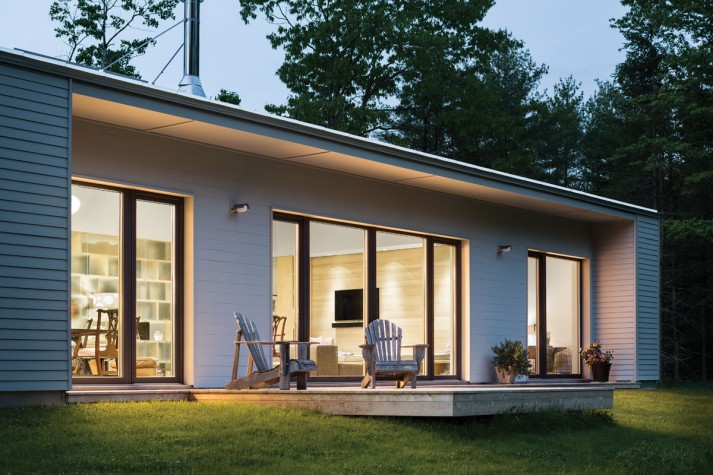Bright-Minded Home March 2016

Q+A with Gunther Kragler of GO Logic, on Passive House and Net-Zero Design
Following the German Passive House standard (or “Passivhaus”), GO Logic has implemented an insulated, airtight building shell that makes use of passive solar gain and thermal mass to reduce energy demand for a new home on the Cousins River in Yarmouth.
Q: IN WHAT WAYS DOES THE PASSIVE HOUSE STANDARD REDUCE ENERGY CONSUMPTION?
A: The Passive House standard represents a 90 percent improvement on code- compliant construction for a building’s space heating loads, which ensures a significant energy savings over the life of the home. At Cousins River, this is achieved through optimized improvements such as superinsulated foundation, wall, and roof systems; high-performance, triple-pane German windows; and an airtight building shell with a heat recovery ventilation (HRV) system.
Q: HOW DOES PASSIVE HOUSE HELP TO ACHIEVE NET ZERO?
A: Net zero is achievable in any home. However, traditional homes may require substantial investment to cover the energy demand of the house, such as a huge
solar array. Passive House reduces the energy demand of the house to a point that achieving net zero requires minimal additional investment. The Cousins River residence needed only a 4.6-kilowatt photovoltaic array to offset the remaining annual energy demand.
Q: WHAT ARE THE BENEFITS OF PASSIVE HOUSE, OTHER THAN ENERGY PERFORMANCE?
A: Because the shell of the Passive House is so airtight, the building requires mechanical ventilation, which provides better indoor air quality that is healthier for inhabitants. The HRV system used in a Passive House runs 24 hours a day, with its primary function being to recapture heat from the outgoing airstream to preheat the incoming stream of air. This adds to the building’s performance and overall energy reduction by not wasting or exhausting heat energy. The hidden benefit is that fresh air is constantly being provided to the living space, which is great for people who have seasonal allergies or for those seeking better indoor air quality. The Cousins River residence uses a Zehnder ComfoAir 200 HRV system.
Learn more in the March story “Lean, Serene & Green”